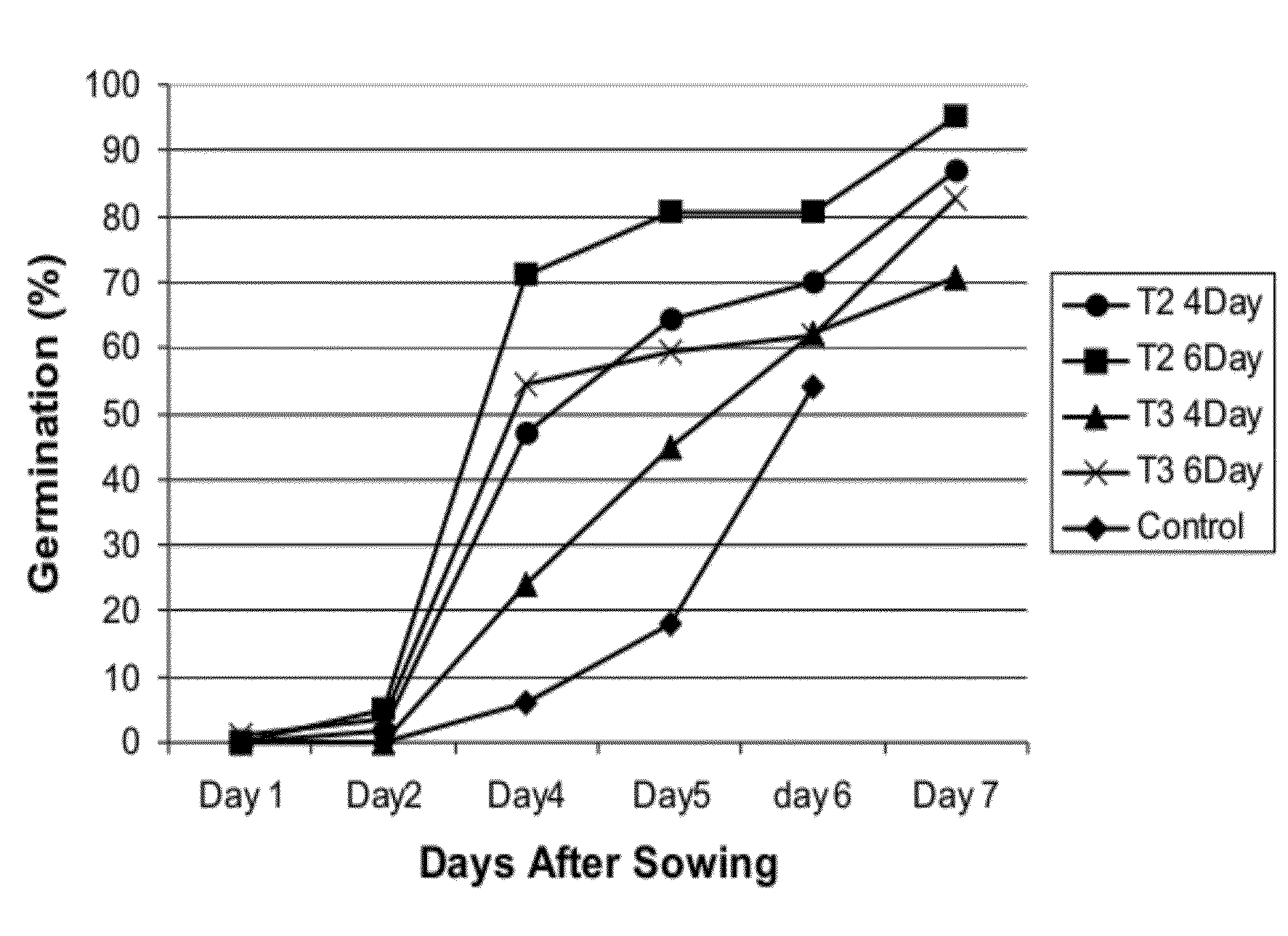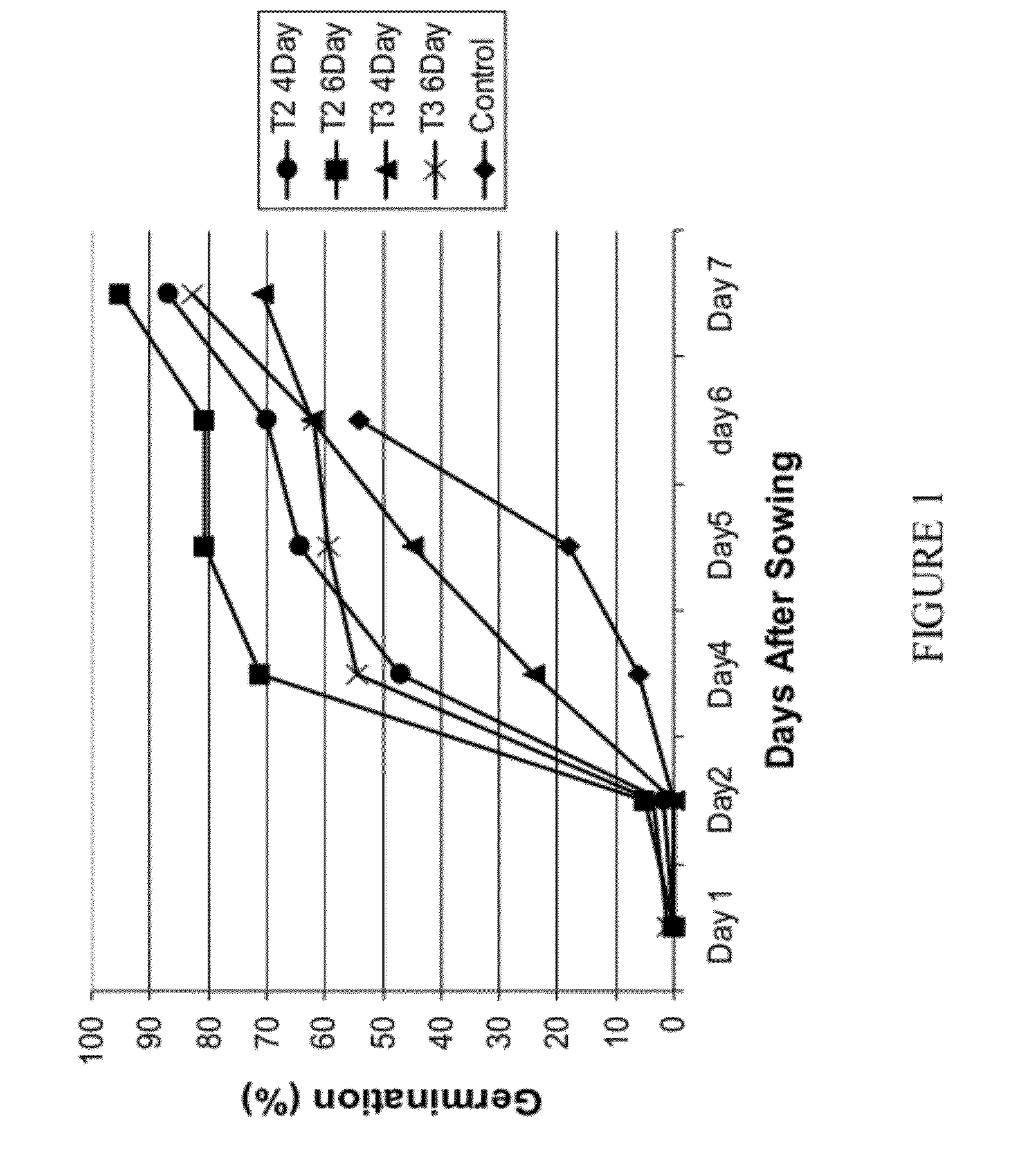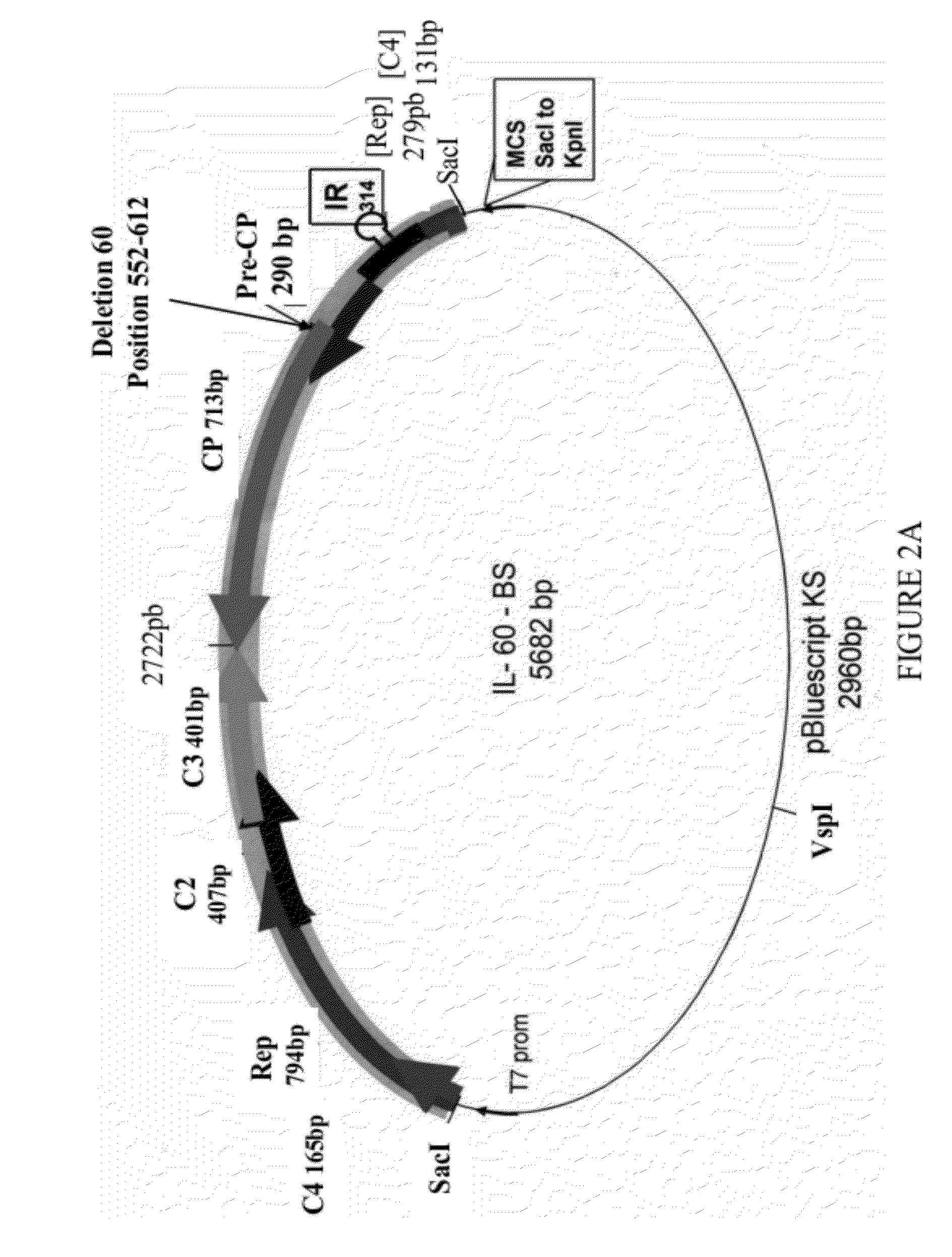Introducing DNA into plant cells
a plant cell and dna technology, applied in the field of plant molecular biology, can solve the problems of poor transformation efficiency, difficult and time-consuming transformation of some agriculturally important crop plants, and serious genotype limitations, and achieve the effect of simple and efficient delivery of heterologous dna and easy growth
- Summary
- Abstract
- Description
- Claims
- Application Information
AI Technical Summary
Benefits of technology
Problems solved by technology
Method used
Image
Examples
example 1
Priming Using a Priming Medium without Foreign DNA
[0109]Tomato seed priming in the presence of polyethylene glycol (PEG) was carried out as previously described (Khan, A A. 1992. In: Horticultural Reviews, Vol. 14, ed. J. Janick. New York: John Wiley, pp. 131-181; Taylor G. et al. 1998. Seed Science Technology 8:245-256), with some modifications.
[0110]Batches of 50 tomato seeds were imbibed in a solution composed of 0.1M Ca(NO3)2; 0.1M MES (4-morpholineetahnsulfonic acid); 15 mM MgCl2 and 25% (solution T2) or 20% (solution T3) of PEG 8000. The osmotic pressure of solutions T2 and T3 was −1.25 mPa and −1.2 mPa respectively. Untreated dry seeds of the same cultivar, same seed lot were used as control. Treatment was carried out under constant temperature of 20° C. with a 12 hour light regimen daily, and stirred gently for 4 or 6 days to obtain proper aeration. Seeds were then placed on 3M filter paper supplemented with 3 ml sterile water and germination rates were recorded daily. The d...
example 2
Introducing IL-60 Constructs into Seeds by Using Priming Medium
[0111]Tomato seeds were primed with a priming solution containing 25% PEG and germinated as described in Example 1 above in the presence of 20, 40 and 60 μg of each of the IL-60-BS (SEQ ID NO:2) and pIR-GUS (SEQ ID NO:8) DNA constructs. The constructs are illustrated in FIGS. 2A and 2B, respectively. Constructs are also described in International (PCT) Patent Application Publication No. WO 2007 / 141790, incorporated herein by reference. Untreated dry seeds and seeds primed at the same conditions but without the DNA construct served as control.
[0112]Six days after germination the seedlings were transplanted into pots containing 10 liters soil and placed in a greenhouse at 25° C. Twenty one days after planting, DNA was extracted from true leaves (the third true leaf or above) and subjected to PCR with the following primers for GUS assay:
[0113]Forward primer: ATTGATCAGCGTTGGTGGGA (SEQ ID NO:6) and reverse primer: TGCGGTCGCGA...
example 3
Expression of the Foreign Genes
[0114]The DNA constructs of the IL-60 family as detailed in Example 2 above (IL-60-BS in combination with pIR-GUS) facilitated the expression of the foreign gus gene present within the pIR-GUS DNA construct and introduced via priming.
[0115]Tomato leaves from the plant obtained as described in Example 2 above were stained for beta-glucuronidase (GUS) according to Jefferson R A. et al. (1987. EMBO J 6: 3901-3907).
[0116]Blue color staining of the leaf tissue clearly denotes the expression of the GUS protein (FIG. 4A-B).
PUM
| Property | Measurement | Unit |
|---|---|---|
| Electrical resistance | aaaaa | aaaaa |
Abstract
Description
Claims
Application Information
 Login to View More
Login to View More - R&D
- Intellectual Property
- Life Sciences
- Materials
- Tech Scout
- Unparalleled Data Quality
- Higher Quality Content
- 60% Fewer Hallucinations
Browse by: Latest US Patents, China's latest patents, Technical Efficacy Thesaurus, Application Domain, Technology Topic, Popular Technical Reports.
© 2025 PatSnap. All rights reserved.Legal|Privacy policy|Modern Slavery Act Transparency Statement|Sitemap|About US| Contact US: help@patsnap.com



